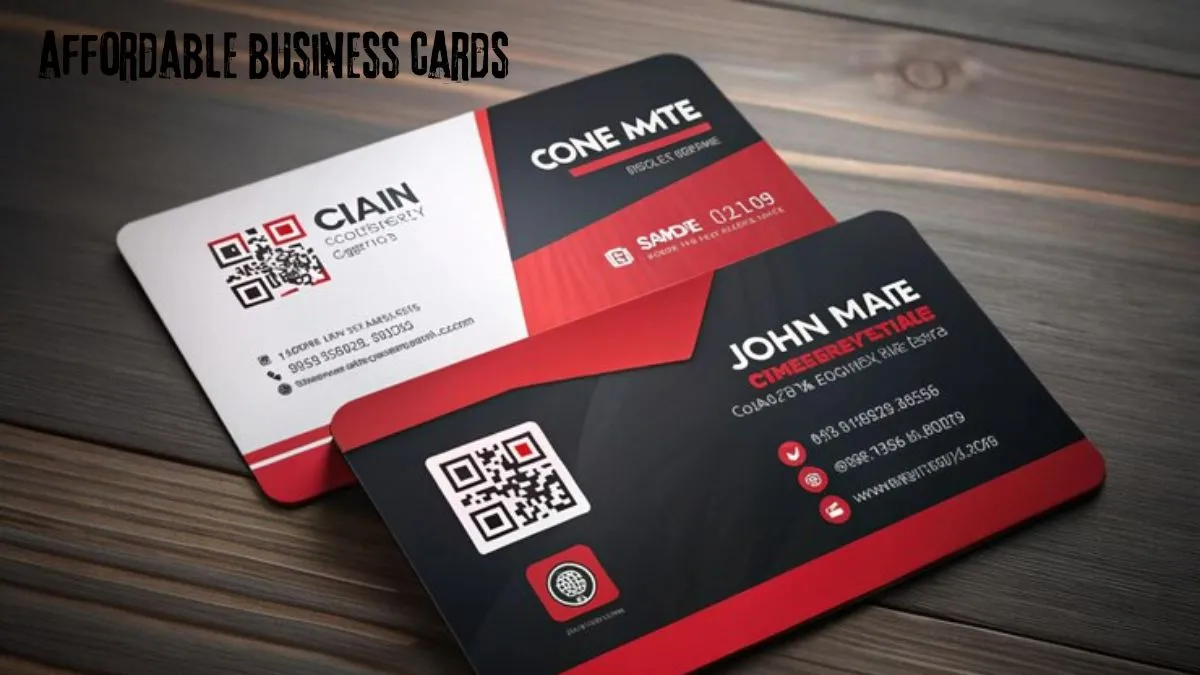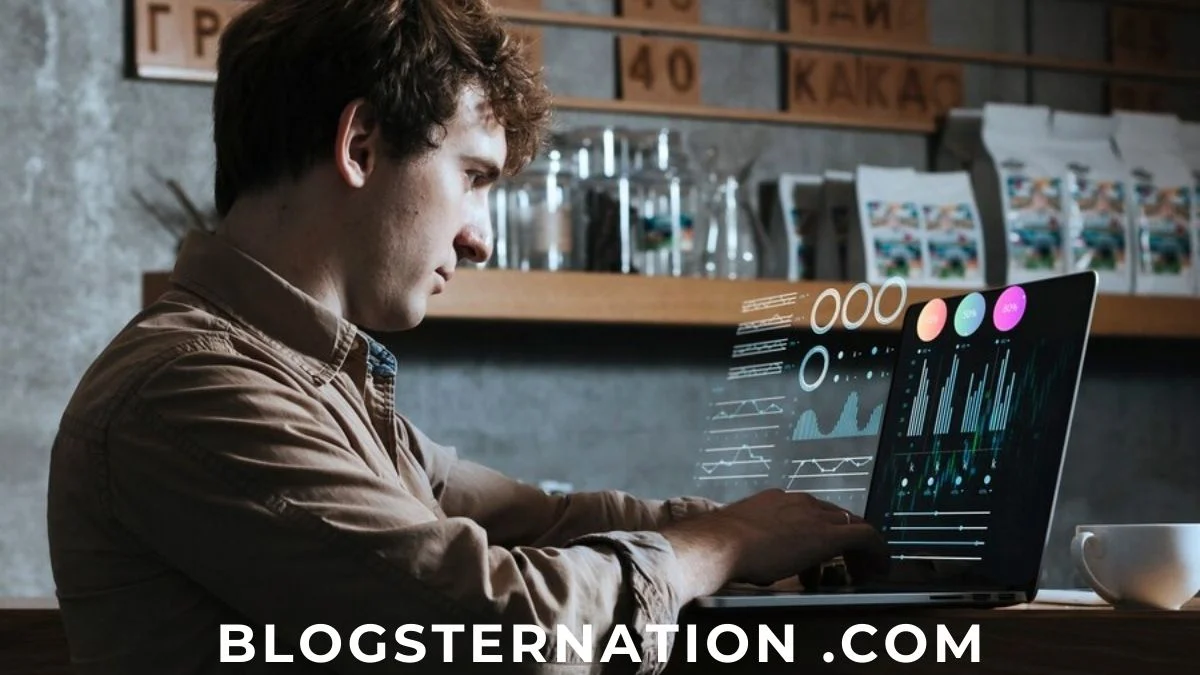Blog
The Ultimate Guide to Affordable Business Cards: Tips, Trends, and Best Practices

In the world of business, first impressions are crucial. A well-designed business card serves as a powerful tool to make a memorable impression and establish a professional identity. However, you don’t need to break the bank to create an effective and stylish business card. This guide explores how to get affordable business cards without sacrificing quality, including design tips, printing options, and best practices.
Understanding the Importance of Business Cards
Business cards are more than just a medium to share contact information. They are a reflection of your brand, professionalism, and attention to detail. A well-crafted card can enhance your network, reinforce your brand’s identity, and even lead to new business opportunities. Despite the rise of digital communication, a tangible business card still holds significant value in personal interactions.
You might also like: Grow Google Business Profile Audience.
Why Choose Affordable Business Cards?
Opting for affordable business cards doesn’t mean compromising on quality. Many budget-friendly options provide high-quality materials and impressive designs that can effectively represent your business. Here’s why choosing affordable business cards can be a smart decision:
- Cost-Effectiveness: Lower costs allow for higher quantity production, which is ideal for frequent networking events.
- Flexibility: With a lower investment, you can afford to experiment with different designs and materials.
- Professionalism: Affordable doesn’t equate to cheap; it’s about getting value for your money.
Key Considerations for Affordable Business Cards
When seeking affordable business cards, several factors should guide your decision:
- Design: An eye-catching design is essential. Opt for clean, professional layouts that highlight your brand. Utilize online design tools or templates to save on design costs.
- Material: While premium materials like thick cardstock or textured finishes add to the cost, there are still quality options available at lower prices. Standard cardstock or matte finishes can be both affordable and professional.
- Printing Options: Digital printing is often more cost-effective than offset printing, especially for smaller runs. Explore different printing options to find the best balance between cost and quality.
- Quantity: Ordering in bulk often reduces the per-unit cost. Consider how many cards you realistically need and weigh the cost savings of larger orders.
Tips for Designing Affordable Business Cards
- Utilize Templates: Many online printing services offer free templates that are easy to customize. This approach saves on design costs and ensures a professional look.
- Choose Simple Designs: Complex designs with multiple colors and intricate details can increase printing costs. A clean, minimalist design often stands out and remains within budget.
- Use Standard Sizes: Custom shapes or sizes can be more expensive. Stick to standard sizes, such as the 3.5 x 2-inch card, to keep costs down.
- Limit Color Use: While color can enhance your card’s appearance, using fewer colors can reduce printing costs. Opt for a design that effectively uses one or two colors.
- Leverage Free Tools: Online design platforms like Canva or Adobe Spark offer free tools and templates for creating professional business cards.
Choosing the Right Printing Service
Selecting the right printing service is crucial to achieving a balance between cost and quality. Here are some tips for choosing an affordable and reliable printer:
- Compare Quotes: Get quotes from multiple printing services to find the best price for your needs. Consider both local and online printers.
- Read Reviews: Check customer reviews and ratings to ensure the printer offers high-quality products and reliable service.
- Look for Discounts: Many printers offer discounts for first-time customers or bulk orders. Look for promotions or coupon codes to save additional money.
- Check Samples: Request samples to assess the quality of the materials and printing before placing a large order.
Innovative Ideas for Affordable Business Cards
- DIY Printing: For very small quantities, consider printing your cards at home using high-quality paper and a color printer. This can be a cost-effective solution if you have a tight budget.
- Digital Business Cards: Consider offering a digital version of your business card through email or a QR code. This can complement your physical cards and reduce printing costs.
- Recycled Materials: Using recycled paper can be a budget-friendly and eco-friendly option. It also adds a unique touch to your business cards.
- Minimalist Designs: Embrace a minimalist design approach, which often requires fewer resources and reduces overall costs while still maintaining professionalism.
Best Practices for Using Business Cards
- Keep Them Updated: Regularly update your business cards to reflect any changes in your contact information or job title.
- Distribute Strategically: Hand out business cards during networking events, meetings, and conferences. Ensure that you provide them to individuals who are genuinely interested in your business.
- Store Them Properly: Use a cardholder to keep your business cards clean and in good condition. A well-organized cardholder makes it easier to distribute cards when needed.
- Follow Up: After meeting someone and exchanging business cards, follow up with a personalized email or message. This reinforces your connection and can lead to further opportunities.
Conclusion
Affordable business cards offer an excellent opportunity to make a strong first impression without overspending. By focusing on effective design, choosing the right printing options, and leveraging cost-saving strategies, you can create professional, eye-catching business cards that enhance your networking efforts and reflect your brand’s identity.
Whether you’re just starting out or looking to refresh your existing cards, applying these tips and practices will help you achieve a balance between affordability and quality, ensuring your business cards effectively support your professional goals.
Blog
Exploring the www.goodmooddotcom.com hotels category

Finding the perfect place to stay during your travels can make or break your experience. With www.goodmooddotcom.com hotels category, you’re not just booking a room—you’re unlocking a tailored experience that matches your mood, preferences, and budget. Let’s dive into what makes this platform a game-changer for travelers.
Why Choose GoodMoodDotCom for Hotel Booking?
User-Friendly Interface
Navigating GoodMoodDotCom feels effortless. Its sleek design allows users to search and book hotels without a hitch. With advanced filters for location, price, amenities, and more, finding your dream stay is only a few clicks away.
Competitive Pricing
Nobody wants to overspend on accommodations, and GoodMoodDotCom ensures you don’t have to. A built-in price comparison tool helps you snag the best deals, with frequent discounts and seasonal offers sweetening the deal further.
Verified Reviews
GoodMoodDotCom prioritizes transparency by featuring only verified reviews. These are insights from real travelers who’ve stayed at the properties, ensuring trustworthy and relevant feedback.
MUST RREAD: MyFavouritelPaces.Org:// Blog: A Unique Travel Blog for Wanderlusts
Top Hotel Categories on GoodMoodDotCom
Budget-Friendly Hotels
Traveling on a budget? No problem! GoodMoodDotCom lists numerous budget-friendly hotels that combine affordability with comfort. You’ll find great deals without compromising quality.
Luxury Hotels
For those who prefer the finer things in life, the luxury hotels listed offer exquisite amenities, from rooftop pools to five-star dining experiences.
Family-Friendly Hotels
Traveling with kids? Family-friendly hotels cater to your needs with kid-focused amenities like play areas, pools, and spacious family suites.
Pet-Friendly Hotels
Pet parents rejoice! GoodMoodDotCom features hotels with pet-friendly policies, ensuring your furry friends feel just as welcomed.
Unique Features of GoodMoodDotCom Hotels
Mood-Based Recommendations
Here’s where it gets exciting. GoodMoodDotCom uses AI to suggest hotels based on your mood—whether you want a serene escape or a lively city vibe, the platform has you covered.
24/7 Customer Support
Need help with bookings or changes? Their round-the-clock support ensures a hassle-free experience.
Tips for Maximizing Your Hotel Search Experience
Using Advanced Filters
Fine-tune your search by filtering for essential features like Wi-Fi, free breakfast, or proximity to attractions.
Reading Reviews Effectively
Pay attention to details in reviews—real-life stories from past guests can be invaluable in making the right choice.
Why Verified Reviews Matter
Transparency in Listings
Verified reviews eliminate guesswork. Honest insights ensure you know what to expect from your stay.
User Stories and Real-Life Experiences
Nothing beats hearing from someone who’s been there. Their experiences help paint a realistic picture of what your trip might look like.
How to Secure the Best Deals
Booking in Advance vs. Last-Minute Deals
Planning ahead often secures better rates, but last-minute deals can occasionally offer unbeatable prices for the spontaneous traveler.
Seasonal Promotions
Traveling during off-peak seasons? GoodMoodDotCom frequently runs promotions, ensuring you save even more.
Exploring Destinations Through GoodMoodDotCom
Popular Travel Destinations
Whether it’s Paris, New York, or Tokyo, GoodMoodDotCom highlights the top cities worth exploring.
Hidden Gems for Unique Stays
Looking for something different? Discover charming, lesser-known destinations that offer unforgettable experiences.
Conclusion
www.Goodmooddotcom.com hotels category is revolutionizing how we book hotels by combining convenience, transparency, and personalized recommendations. Whether you’re a budget traveler, luxury seeker, or family planner, this platform ensures your next stay matches your expectations.
FAQs
- How does GoodMoodDotCom ensure the authenticity of hotel reviews?
The platform only accepts reviews from verified guests, ensuring honest and reliable feedback. - Can I modify my hotel booking on GoodMoodDotCom?
Yes, bookings can typically be modified directly through your account or with the help of customer support. - What payment options are available on the platform?
GoodMoodDotCom accepts various payment methods, including credit cards, digital wallets, and more. - How are mood-based hotel recommendations curated?
AI algorithms analyze your preferences and travel history to suggest the perfect accommodations. - Is there a loyalty program for frequent travelers?
Yes, frequent users can benefit from exclusive perks and rewards through the platform’s loyalty program.
Blog
Arzu Ozergul Casa De Las Lenguas: A Cultural and Linguistic Haven

Have you ever thought about how languages connect people from different corners of the world? Arzu ozergul casa de las lenguas, has made it her mission to celebrate linguistic diversity and promote global understanding. This article explores the story of Arzu Özergül and her innovative institution that bridges cultural and linguistic divides.
Who is Arzu Özergül?
Arzu Özergül is an educator, linguist, and cultural enthusiast who believes in the transformative power of languages. Born into a multicultural environment, she developed an early passion for understanding different cultures. Her experiences traveling and studying languages ignited her dream of creating a space where people could learn not just words, but the essence of different cultures.
The Inspiration Behind Casa de las Lenguas
The idea for Casa de las Lenguas stemmed from Arzu’s realization that language is more than a tool for communication—it’s a key to understanding the world. Recognizing the growing need for cultural empathy in an interconnected world, she founded Casa de las Lenguas to offer a space where individuals could explore languages while immersing themselves in diverse traditions.
What is Casa de las Lenguas?
Casa de las Lenguas, which translates to “House of Languages,” is a vibrant hub dedicated to teaching languages and celebrating cultures. Equipped with state-of-the-art facilities and an inclusive philosophy, it serves learners from all walks of life. The organization’s commitment to fostering understanding through language makes it a standout institution.
Programs Offered
Language Learning Courses
At Casa de las Lenguas, learners can choose from an extensive list of languages, including widely spoken ones like English, Spanish, and Mandarin, as well as less common tongues like Swahili and Icelandic. Courses are tailored to different proficiency levels, ensuring that both beginners and advanced speakers find a place.
Cultural Workshops
From traditional dance lessons to culinary experiences, these workshops allow participants to dive into the cultures associated with the languages they’re learning. By pairing language with culture, Casa de las Lenguas ensures a holistic learning experience.
International Exchange Programs
One of the most exciting aspects of Casa de las Lenguas is its exchange programs. These initiatives enable participants to travel, live, and learn in communities that speak the language they’re studying, fostering authentic connections.
Impact on the Community
Local Engagement
Casa de las Lenguas has become a cornerstone of the local community, collaborating with schools and offering scholarships. Its impact extends beyond education, contributing to cultural events and local economic growth.
Global Influence
On a global scale, Casa de las Lenguas builds bridges between diverse communities, promoting understanding and reducing cultural stereotypes.
Teaching Methodologies at Casa de las Lenguas
The institution employs a communicative approach, ensuring that learners can use their skills in real-life situations. By integrating technology like language apps and virtual reality, Casa de las Lenguas keeps pace with modern educational trends. Experiential learning, such as field trips and practical activities, further enhances the experience.
Why Choose Casa de las Lenguas?
Casa de las Lenguas isn’t just a language school—it’s a transformative experience. Learners rave about its friendly environment, innovative methods, and the genuine connections they make. Awards and recognitions further highlight its excellence in the field of education.
Challenges Faced and Overcome
Every great vision comes with hurdles. From finding initial funding to designing programs that balance language and culture, Arzu Özergül’s journey has been one of resilience and determination. Today, Casa de las Lenguas stands as a testament to her perseverance.
Future Plans for Casa de las Lenguas
Looking ahead, Casa de las Lenguas aims to expand its offerings, reaching more learners worldwide. Plans include launching online courses and forming partnerships with international educational organizations to further its mission of connecting people through language.
Conclusion
Arzu ozergul casa de las lenguas remind us of the power of language to unite and inspire. By fostering linguistic and cultural understanding, they create a more connected and empathetic world. Ready to embark on your own linguistic journey? Casa de las Lenguas is waiting to welcome you.
FAQs
- What is the main mission of Casa de las Lenguas?
To promote global understanding through language and cultural immersion. - How can I enroll in a program at Casa de las Lenguas?
Visit their official website or contact their admissions office for details. - Does Casa de las Lenguas offer online courses?
Yes, they are expanding their online offerings to reach a global audience. - What languages are taught at Casa de las Lenguas?
They offer a wide range, from popular languages like Spanish and French to unique ones like Basque and Swahili. - How does cultural immersion enhance language learning?
Immersion helps learners understand cultural contexts, making the language more meaningful and practical.
Blog
Blogsternation.com: Tips for Boosting Your Blog’s Traffic

Growing a blog’s traffic is the cornerstone of building a successful online presence. Whether you’re a budding blogger or an experienced content creator, increased visibility can lead to higher engagement, monetization opportunities, and influence. Blogsternation.com is a platform designed specifically to help bloggers achieve these goals. With its unique tools, community support, and practical insights, Blogsternation can significantly boost your blog’s performance. In this article, we’ll explore how to effectively use Blogsternation to elevate your blogging journey.
What Is Blogsternation.com?
Blogsternation.com is a comprehensive platform for bloggers, offering tools and resources to optimize content, attract readers, and grow a loyal audience. It combines elements of social networking, SEO optimization, and analytics to provide bloggers with everything they need to succeed in one place.
Must read: http://wizzydigital.org blog: Your Guide to Digital Excellence
Key Features of Blogsternation:
- Advanced keyword research tools for better SEO
- Content-sharing mechanisms to reach wider audiences
- Analytics to track and improve blog performance
- A supportive community for collaboration and networking
The Role of Blog Traffic in Blogging Success
Traffic is the backbone of any blog. It determines visibility, impacts monetization, and provides a sense of achievement for bloggers. Without readers, even the most well-crafted content goes unnoticed. Here’s why traffic matters:
- Increased Engagement: More traffic leads to more comments, shares, and interactions.
- Revenue Growth: Whether through ads, sponsored posts, or affiliate marketing, higher traffic directly impacts income.
- Brand Authority: A well-read blog positions you as an expert in your niche.
Using Blogsternation.com to Enhance SEO
Search Engine Optimization (SEO) is vital for attracting organic traffic. Blogsternation offers several tools and strategies to help you improve your SEO efforts.
1. Keyword Research Made Easy
Finding the right keywords is half the battle. Blogsternation’s keyword research tools identify trending and high-volume search terms relevant to your niche, making it easier to create content that ranks on search engines.
2. On-Page SEO Optimization
Blogsternation provides step-by-step guidance for optimizing individual posts. From crafting catchy headlines to adding proper meta descriptions, these tips can enhance your blog’s visibility.
3. Backlink Building Strategies
Backlinks are crucial for SEO success, as they signal authority to search engines. Blogsternation connects bloggers within its community, fostering collaborations that lead to natural backlink opportunities.
Engaging Your Audience Through Blogsternation
Reader engagement is key to building a loyal audience. Blogsternation helps amplify this by making your content more shareable and interactive.
1. Sharing Content Across Channels
With Blogsternation’s built-in sharing features, you can distribute your posts to multiple platforms effortlessly, increasing your reach.
2. Building Relationships in the Community
One of the standout features of Blogsternation is its vibrant community. Interacting with other bloggers not only helps you learn but also allows you to tap into their audiences.
Tracking Blog Performance with Blogsternation Analytics
You can’t improve what you don’t measure. Blogsternation’s analytics tools give you insights into:
- Traffic sources and patterns
- Popular posts and keywords
- Audience demographics
Armed with this data, you can refine your content strategy to focus on what works best.
Creating High-Quality Content with Blogsternation
While SEO and analytics are important, content remains king. Blogsternation can help you craft compelling posts that resonate with your audience.
1. Staying Ahead with Trending Topics
Blogsternation highlights trending topics in your niche, helping you stay relevant and attract readers searching for fresh, timely content.
2. Writing for Your Audience
By understanding your readers’ preferences through Blogsternation’s tools, you can tailor your writing style and topics to meet their expectations.
Monetizing Your Blog Using Blogsternation
Beyond traffic, Blogsternation provides opportunities to turn your blog into a revenue-generating platform.
1. Sponsored Collaborations
The community aspect of Blogsternation makes it easier to connect with brands and secure sponsored posts.
2. Affiliate Marketing Opportunities
With the right partnerships, you can promote products related to your blog’s niche and earn a commission.
Common Mistakes to Avoid on Blogsternation
While Blogsternation is highly effective, missteps can hinder your success. Avoid these common pitfalls:
- Ignoring Analytics: Failing to track performance can lead to wasted effort.
- Overloading with Keywords: Keyword stuffing can hurt your SEO ranking.
- Skipping Community Engagement: Blogsternation is a social platform; active participation is key.
Conclusion
Blogsternation.com is a powerhouse tool for any blogger looking to grow their traffic and build a thriving online presence. With features that cover everything from SEO to audience engagement, it offers a holistic approach to blogging success. Whether you’re just starting out or looking to take your blog to the next level, Blogsternation is the ultimate partner on your journey. Start exploring its potential today and watch your blog soar to new heights!
FAQs
1. What is Blogsternation.com?
Blogsternation.com is a platform that provides tools and resources to help bloggers increase traffic, optimize content, and engage with their audience.
2. How does Blogsternation improve SEO?
It offers keyword research, backlink opportunities, and on-page optimization tips, all designed to boost your search engine rankings.
3. Is Blogsternation free to use?
Yes, it offers free features, with premium options for more advanced tools and services.
4. Who can benefit from Blogsternation?
Blogsternation caters to bloggers across all niches, from food and travel to technology and lifestyle.
5. How soon can I see results using Blogsternation?
While results vary, consistent effort often leads to noticeable improvements within a few months.
-

 Technology9 months ago
Technology9 months agoFacilities That Use Cutting-Edge Medical Technology for Intubation
-

 General9 months ago
General9 months agoCask Technologies LLC Lawsuit: An In-Depth Look into the Legal Battle
-

 Technology9 months ago
Technology9 months ago4416-4420 Technology Drive, Fremont, CA 94538: A Hub of Innovation and Growth
-

 Games9 months ago
Games9 months agoThe Ultimate Guide to Appfordown Games
-

 Technology9 months ago
Technology9 months agoRevo Technologies Murray, Utah: A Leader in Innovative Solutions
-

 Crypto9 months ago
Crypto9 months agoCrypto-Legacy.App Software: Revolutionizing Cryptocurrency Management
-

 Entertainment9 months ago
Entertainment9 months agoThe Ultimate Guide to Rear Seat Entertainment Systems
-

 Games7 months ago
Games7 months agoVanessa-Casino.com Mystical Card Game: A Journey into Enchantment
